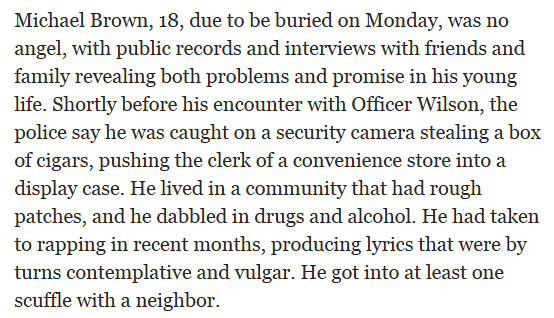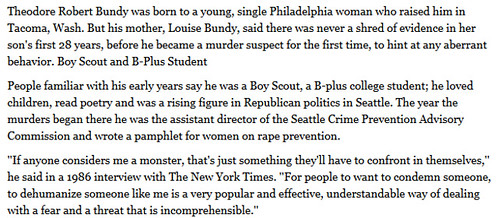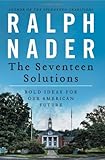 (Image: Drewdlecam)
(Image: Drewdlecam)Washington - The background of a key negotiator in the battle over a Senate report on the CIA's use of interrogation techniques widely denounced as torture has sparked concerns about the
Obama Administration's objectivity in handling the study's public release.
Robert Litt, the general counsel for the Office of the Director of National Intelligence, is a former defense lawyer who represented several CIA officials in matters relating to the agency's detention and interrogation program. Now he's in a key position to determine what parts of the Senate Intelligence Committee's 6,300-page report will be made public.
Litt's involvement doesn't appear to be an ethics issue, at least by the legal definition. But experts say that while it may be acceptable on paper, his involvement in the review should have been a red flag.
"It does not cross the very low bar that the profession sets for an impermissible conflict of interest," said Jack Marshall, the president and founder of ProEthics Ltd., a national ethics consulting and training company that has provided seminars to Government lawyers, including those employed by the CIA. "But it is the kind of conflict of interest that should be avoided at all costs. The Government has to be held to a higher standard."
Litt, who's now 64, was confirmed to his post by the
U.S. Senate in 2009, contingent upon
his agreement to recuse himself from situations that involved his former clients. He referred to the potential conflict in his responses to the Intelligence panel's questions for the record, submitted during the course of his confirmation process.
Agency in
matters relating to the detention and interrogation of suspected terrorists," Litt wrote to the committee in 2009. "By statute, under the rules of ethics and by virtue of my ethics agreement that has been provided to the committee, I will not participate personally and substantially in any particular matter involving these clients . . . including decisions about similarly situated individuals."
Despite his 2009 testimony, though, Litt has found himself in the middle of a heated dispute over a program that, according to his testimony, involved several of his former clients.
Litt's prior representations, however, didn't seem to bother Sen. Dianne Feinstein, D-California, who chairs the Senate Intelligence Committee and who
approved the arrangement.
"I spoke with Bob Litt about this matter and believe he will be fair, and negotiations thus far have shown that to be the case," Feinstein said in a statement. "The DNI's designated Ethics official has reviewed the situation and determined there is no conflict that would necessitate a Recusal."
The Office of the Director of National Intelligence confirmed Feinstein's approval and denied that Litt's involvement violated his prior testimony.
"Consistent with his commitments, Mr. Litt has not participated in any decisions relating to the possible prosecution or investigation of his former clients, or any decisions that would affect the outcome of such matters," the office said in a statement. "In addition, he and the designated ethics official met with Chairman Feinstein to discuss the matter and she did not ask for his recusal in this matter."
The Director of National Intelligence's ethics official is Susan Gibson, Litt's principal deputy counsel at his current post.
The conversations between the Senate Intelligence Committee and the administration about Litt's past representations and their approval of his involvement effectively waive charges of a conflict of interest, at least by rules of the legal profession.
"If he advised them on their legal exposure by virtue of their conduct and this report blasts them for that same conduct, he should not participate with regard to that part of the report," said Stephen Gillers, a professor at New York University School of Law who specializes in legal ethics. "However, if everyone involved waives their objections, it wipes the slate clean."
All of Litt's former CIA clients also would have to waive a potential conflict, Gillers said. Administration officials wouldn't say whether that occurred.
While Marshall, the ethics consultant and a Washington lawyer, agreed that it didn't violate professional ethics regulations regarding conflicts, he said Litt's involvement in the negotiations raised "questions of transparency and fairness."
"It's wrong because it raises the specter of cover-ups, it raises the specter of coordinated stories and it creates the danger of an appearance of impropriety," he said.
"The public has a reason to be distrustful when it sees that kind of multiple representations," Marshall continued. "I think every lawyer in this situation has to look back and say, 'Do I have a conflict of interest at this moment with the duties of a government lawyer to the people of the United States of America? Does the public consent to this potential conflict of interest?' "
Citing attorney-client privilege, Litt declined in 2009 to name several of his clients who were involved in "nonpublic investigative matters." Later in his responses to the committee, he said that some of the matters for which he'd provided counsel to CIA officials were classified.
Neither the White House nor Feinstein's office would characterize Litt's prior representation during his time in private practice. When asked whether Litt had represented former senior CIA officials involved in the interrogation program, the Office of the Director of National Intelligence declined to comment, also citing attorney-client privilege.
According to reports in The Washington Post, Litt previously represented a CIA analyst, Alfreda Frances Bikowsky, who played a central role in the bungled rendition of Khaled el-Masri. El-Masri, who was revealed to be innocent, claimed to have been tortured by the agency.
While Litt's involvement appears to meet legal guidelines, it has nonetheless added to the criticism over the administration's handling of the report's public release.
"I have been concerned all along about conflicts of interest related to the declassification of the Senate Intelligence Committee's study," said Sen. Mark Udall, D-Colo., a member of the panel. "I urged the president in April to have the White House lead the declassification process instead of the CIA. . . . The redaction process has not been conducted in accordance with my request, and I remain concerned about who continues to lead and drive the process."
It's been a long, difficult history for the panel's study on the CIA's interrogation and detention program, which has been a source of major deterioration in the relationship between the agency and the Senate oversight committee. The report's executive summary is nearing public release. But the White House and its chief spy agency have effectively stalled even that process.
The Intelligence panel began compiling the report on the CIA's post-9/11 detention, rendition and interrogation program in 2009. The Report, although completed in 2012, has been held hostage because of fierce debates between the agency and the panel.
Those disputes culminated last month when the (CIA) Agency revealed that it had spied on the computers of Committee Staffers who were compiling the report. The CIA also revealed that, during the course of the spying, CIA officials had falsified evidence against the Committee Staffers in order to charge them with mishandling Classified Information.
Feinstein's panel voted to de-Classify the nearly 500-page executive summary of its report in April, but that's been indefinitely halted because of disagreements over the Report's blackouts.
The document that was returned to the committee after the executive branch's declassification review was rendered incomprehensible due to redactions,
according to Feinstein and several of her Democratic Committee colleagues.
The crux of the redactions, officials said, are the pseudonyms used to identify CIA officials involved with the program.
Feinstein and several of her fellow Democrats appealed to the White House that
it _ not the agency _ lead the declassification process for the executive summary.
Their appeals fell on deaf ears, as the White House has deferred to the CIA
Agency's leadership throughout the declassification effort. White House National Security Council representative Caitlin Hayden defended Litt's involvement, as well.
"Bob Litt is one of the Administration's strongest proponents of transparency in intelligence, consistent with our National security, and he and we are fully committed to ensuring there is no conflict of interest as the Administration continues to work to see the results of the committee's review made public," Hayden said in a statement.
Accusations of conflict and mishandling have plagued the committee's report for months. Litt's involvement is just the latest controversy. In an explosive floor speech in March, Feinstein revealed that the CIA lawyer responsible for filing the falsified crimes report against her Staffers, Robert Eatinger, is named more than 1,600 times in the Report.
Tish Wells contributed to this article.









